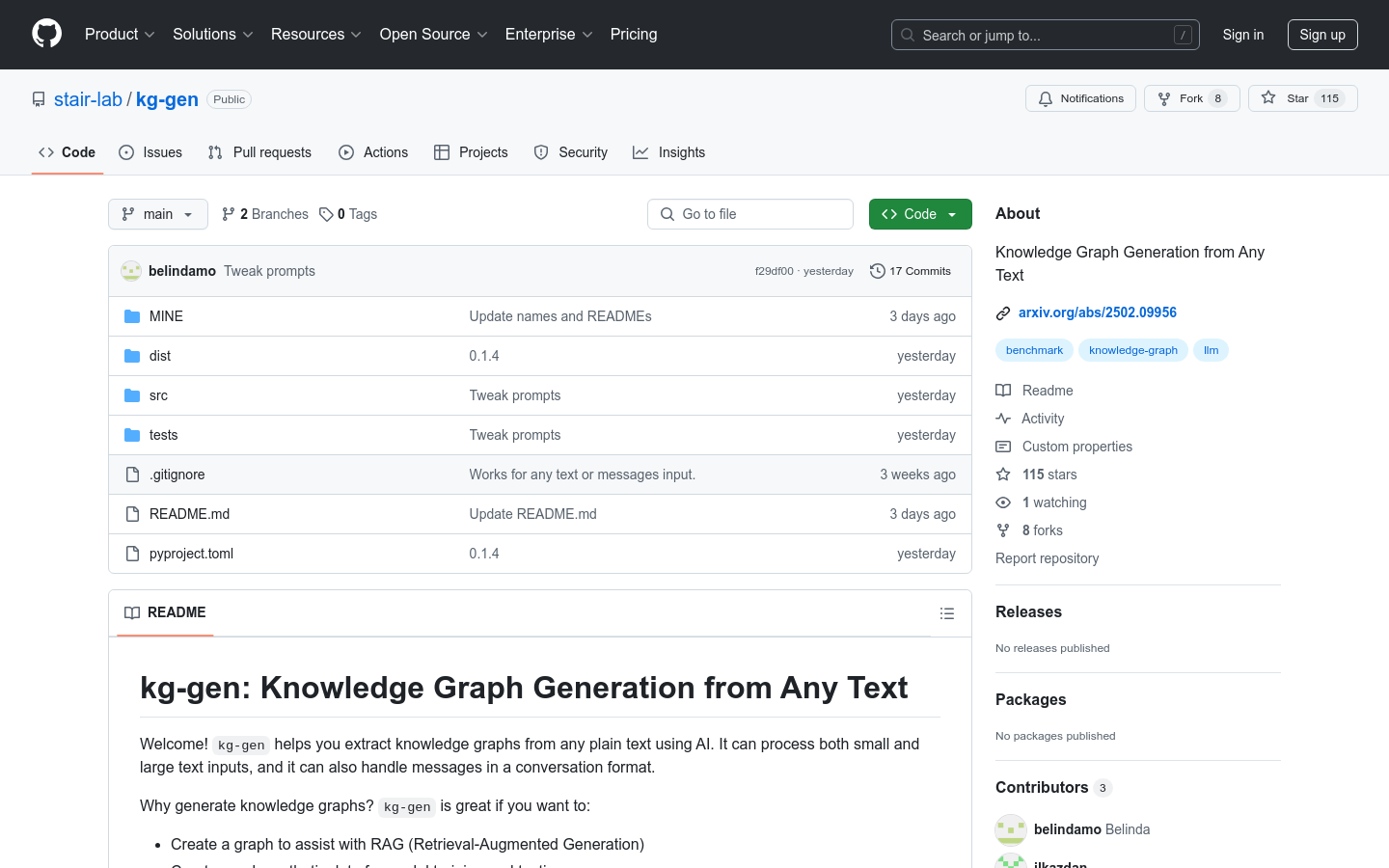

Kg Gen
Overview :
kg-gen is an artificial intelligence-based tool that extracts knowledge graphs from plain text. It supports text inputs ranging from single sentences to lengthy documents and can handle conversational-style messages. Leveraging advanced language models and structured output techniques, this tool helps users quickly construct knowledge graphs, suitable for natural language processing, knowledge management, and model training, among other applications. kg-gen provides flexible interfaces and a variety of functionalities designed to streamline the knowledge graph generation process and enhance efficiency.
Target Users :
kg-gen is suitable for developers, researchers, and data scientists who need to extract structured knowledge from text. It can help them quickly generate knowledge graphs for model training, knowledge management, and natural language processing tasks. Additionally, it is also applicable for professionals who require in-depth text analysis and relationship mining.
Use Cases
Extract family relationship graphs from family relationship texts.
Extract concepts and relationships from technical documents for knowledge management.
Analyze dialog content to generate relationship graphs of dialog topics and entities.
Features
Supports extracting knowledge graphs from plain text and conversational messages.
Capable of handling large texts, optimizing processing speed through chunking and clustering techniques.
Provides entity and relationship clustering features to reduce duplicate and redundant information.
Supports various language models and API providers, such as OpenAI, Ollama, etc.
Can aggregate multiple knowledge graphs to generate a more comprehensive knowledge structure.
How to Use
1. Install the kg-gen module: Use the command `pip install kg-gen` to install it.
2. Import and initialize the KGGen class, optionally configuring the model and API key.
3. Provide text input and call the `generate` method to generate the knowledge graph.
4. Optionally set the `chunk_size` parameter to process large texts in chunks.
5. Use the `cluster` method to optimize the generated graph through clustering.
6. Aggregate multiple graphs to generate a more comprehensive knowledge structure.
7. Save or further process the generated knowledge graph as needed.
Featured AI Tools

Myreader AI
MyReader is an AI-powered tool that reads books for you. You can upload any book or document (PDF, EPUB), ask questions, and get answers along with the relevant passage for your reference. You can also browse the contents of the uploaded books, view related chapters, and jump to specific pages within the book to continue reading. MyReader helps you efficiently acquire knowledge and allows you to create different contexts, such as philosophy, finance, and healthcare. You can refer to your uploaded books anytime, with a maximum upload limit of 20,000 pages. Please visit our website for pricing details.
Knowledge Management
606.1K

Google NotebookLM
NotebookLM is a personalized AI assistant designed to help users with thinking, summarizing, and brainstorming. Users can create notebooks, add Google Docs, PDFs, or copied text as information sources, and then ask NotebookLM questions to assist with explanation, summarization, and brainstorming. Users can also click on information sources to automatically generate summaries and key themes. NotebookLM's strength lies in its personalized assistance, allowing users to trust the information it provides and build upon it for their work.
Knowledge Management
348.0K














